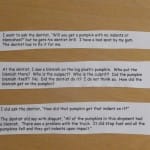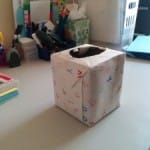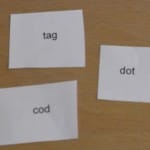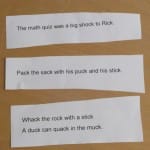Multisensory Monday- Shooting for Fluency
Posted by Brainspring on 20th Jul 2014
Hi everyone,
Welcome to Multisensory Monday! I have seen more kids than I even knew lived in my neighborhood these past few days as I have been walking my dog in the beautiful Michigan weather. They are outside (yay!) riding bikes, coloring with chalk and playing all sorts of games that involve a ball. Kids love games that involve kicking, throwing, shooting, catching, hitting or dodging a ball (plus, it’s good for their coordination, balance and sensory perception). Today’s multisensory activity makes reading a ball- Shooting for Fluency.
Shooting for Fluency
For this activity you’ll need a something to toss (a ball, a beanbag, a crumpled sheet of paper), a container to toss into (an empty garbage can, a crate, a cardboard box) and several slips of paper with some sort of text (more on this in a moment). This game can easily be done with an individual student or a small group. You can also use this for students at various levels of reading fluency, from single word reading to paragraphs.
To play, the student randomly selects or the teacher chooses a slip of paper with the reading text on it. The teacher gives the student a fluency skill to focus on while reading, preferably something that they have already been working during oral reading. The student reads the text working on the fluency skill and then gets to try to shoot a basket. Mark a spot where the students will shoot from to keep the game fair and slightly challenging. You can decide how the game is won: the winner could be the first player/team to get to a certain number of points or the player/team with the most points after all the slips have been read.
Of course, making a basket will matter most to the students, but the most important part of this game actually is the practice reading fluently. Therefore, it is crucial that you select an appropriate kind of text and supply a specific skill for the student to focus on that you have modeled before. Stress to the students that it is important to read accurately and practice the oral reading skill. Do not allow the student to try for a basket until they do. Here are 4 examples of types of text you could choose and an example of a skill to focus on for each. All these examples are words, sentences or stories from RLAC’s Phonics First program.
1) Single Word Fluency– Each slip of paper has only one word containing only skills the student has been taught. This would be most appropriate for a beginning reader in Layer 1 who is beginning to read whole words without needed to sound out each sound.
2) Word Reading Fluency– Each slip of paper has several words containing various skills the student has been taught. The words can all use the same short vowel sound, or for a slightly more advanced option, mix up the vowel sound. This level is appropriate for students who need more practice with reading isolated words to increase their decoding speed.
3) Sentence Reading Fluency– Each slip of paper has one or a few sentences from Phonics First lessons the student has already covered. Use this for students who are working on connected text fluency and phrasing when reading aloud.
4) Paragraph Reading Fluency– Each piece of paper contains a paragraph from an RLAC Phonics First Layer Story that the student has already read. This is the most advanced level for students continuing to build connected text fluency and working on the finer aspects of oral reading, like speed and prosody.

Example Fluency Skill: “Pay attention to punctuation. Take a short pause at commas and a longer pause at periods.”
Mystery Letter Box
Dite has a wonderful tactile activity this week for pre-readers that can also be adapted for beginning readers. Read her post to learn more about how the Mystery Letter Box can be used to help students identify letters, practice proper orientation and begin to learn sounds. Once you make your box, you will be able to use it for years!
http://atlantareads.org/2014/07/multisensory-monday-mystery-letter-box/
I hope your Monday afternoons are as beautiful as mine here!
The new school year is coming soon! Please email or post any questions, concerns or things that come to your mind as you prepare for the year ahead.



